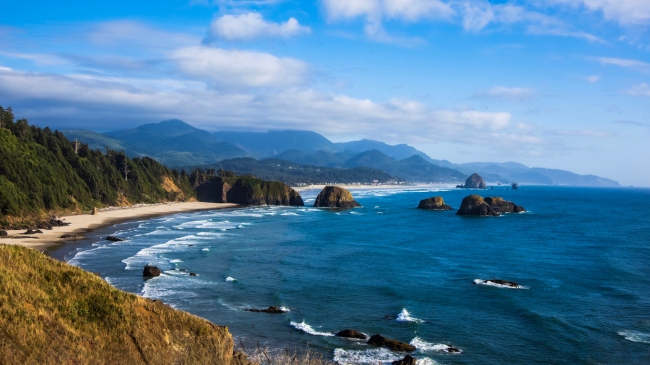iStockphoto / https://www.istockphoto.com/portfolio/DannyGao?mediatype=photography
A mysterious sea creature was beached on an Oregon coast this month. Many onlookers named the white-haired sea monster as the “globster,” but scientists have identified the massive carcass as something much less forbidding.
On Oct. 12, a huge carcass washed up on the beach of Florence, Oregon. Adoni Tegner discovered the “sea monster” while riding his all-terrain vehicle on the Florence beach.
“It just didn’t look anything like what I’ve ever seen. It looked more stringy and it almost looked like it had been a large squid or something,” Tegner told KOIN.
The decomposing sea creature was the size of a pickup truck and had what appeared to be white hair.
KOIN reported, “It looked somewhat like a wet Falkor — the luck dragon from the movie ‘The NeverEnding Story.’”
Tegner couldn’t believe his eyes, so he rushed back into town to bring his girlfriend to see the “sea monster.”
His girlfriend – Merica Lynn – noted that the texture of the sea creature was “firm but squishy.”
“We’ve seen whales wash up before, and some that had been stuck on the shore for a few weeks, and never have they grown hair like that,” she added.
Tegner said that the animal had long tendrils that were similar to a giant squid.
“If it had been torn apart, it was really odd how the muscle structure broke down and almost made it look like it had some kind of tentacles on it,” he explained.
However, he also noticed that the sea monster had ribs.
The couple took video of the sea creature, and soon commenters named the animal the “globster.”
Scientists investigated the strange beached creature, and revealed what they believed the sea monster actually is.
“Based on the photos, I’d guess the blob is a decomposing baleen whale carcass,” Mark Clementz – a paleobiology professor at the University of Wyoming – told Newsweek. “The hair-like structures could be baleen poking through or they could be the remnants of the muscle fibers that run along the throat and stomach.”
Yannis P. Papastamatiou – an associate professor in predatory ecology at Florida International University – added, “It’s heavily decomposed which is why it looks like that, and different tissues will decompose at different rates. So tendons, collagen fibers, various proteins, will decompose at different rates, one of which I assume is the ‘white hair’ they are discussing (which clearly isn’t hair).”
Culum Brown – a professor and fish biologist at Macquarie University in Australia – said, “The white ‘hair’ is mostly made of bacteria breaking down strings of blubber. It must smell REALLY bad.”
Want more from BroBible? Follow us on Google News.

